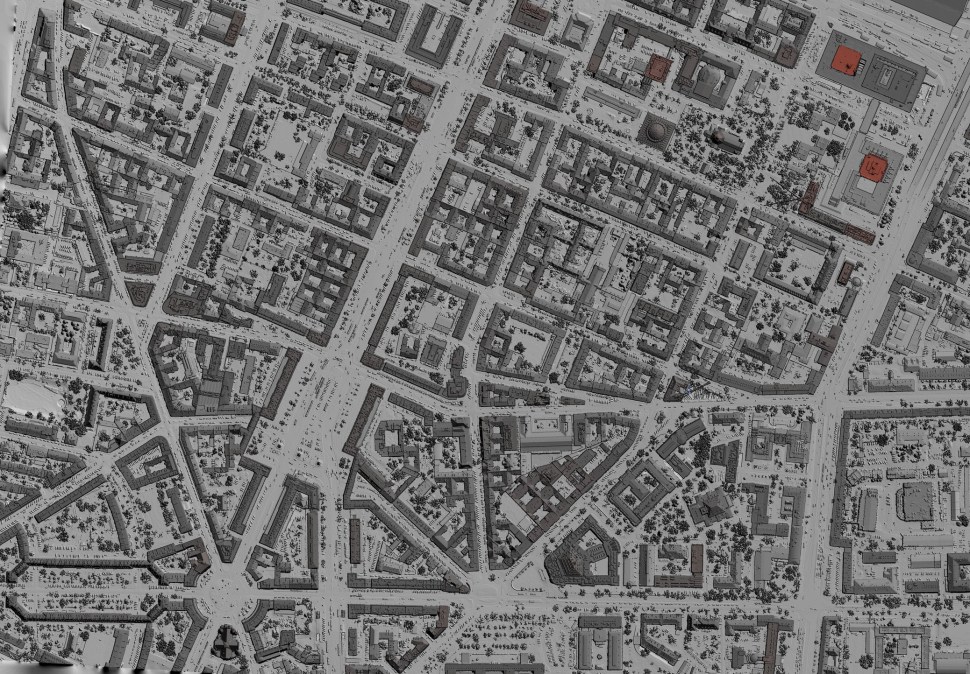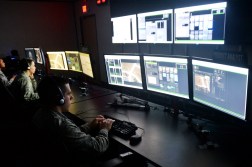With new duties, NGA plans to hasten automation opportunities and create open-data repository

The National Geospatial-Intelligence Agency (NGA) is strategically expanding its government and commercial partnerships and introducing new mechanisms to spur artificial intelligence deployments in support of its components and stakeholders, its research chief said Wednesday.
These moves are necessary to fulfill new responsibilities recently delegated to NGA to scale maturing AI efforts, according to Director of its Research Directorate Cindy Daniell, who spotlighted ongoing initiatives and fresh opportunities at Capital Factory’s Fed Supernova conference in Austin, Texas. In her view, they’ll likely also prove essential to ensuring the U.S. maintains a technological advantage as technology and global competition evolve in the near term.
“The future is unknowable — but our resources, our strengths, opportunities, weaknesses, as well as the trends that lie before us, are not. From these, we can make educated guesses on how to enable the future, and where possible, accelerate it,” Daniell said.
Speaking to an audience of government officials, technologists, investors and entrepreneurs in Texas’ capital region, she also repeatedly emphasized “our national security challenges are too difficult for the government to solve alone.”
NGA provides geospatial intelligence (GEOINT) that is fundamental to the nation’s security. And that GEOINT “tells you what is happening, where, and what might happen when,” Daniell said. The term refers to the exploitation and analysis of imagery and geospatial information to describe, assess and visually depict physical features and geographically referenced activities on the Earth.
While GEOINT capabilities have been “a critical source of information for all eternity,” she said, that has especially been the case for the modern national security apparatus.
“When we layer this with multiple types of imagery and combine it with other intelligence sources, it literally reveals the ground truth — informing critical national security decisions surrounding the Cuban Missile Crisis, the raid on Osama bin Laden’s compound, and support for humanitarian assistance and disaster relief,” Daniell explained. “Needless to say, it has also played a crucial role in the war in Ukraine.”
Given the shifting conflict and political landscapes of this era, the NGA leader and former electrical engineer said she could “not emphasize enough” how important it is for the public, private and academic sectors to work together to drive “novel practical solutions” at this moment.
From a research perspective, Daniell said NGA capability development is informed by three lines of effort.
“The first is validation” or accurate, high-resolution and continually updated representations of Earth’s elements, through physical or activity models, and positioning navigation and timing (PNT), she noted. The second, “collection technologies,” encompasses efficient strategies and methods to deliver spatial-temporal data from an ever-increasing number of sources. The third area, analytic technologies, is all about “accurate, timely, reliable, and scalable methods for data exploitation and analysis,” which are constantly evolving, she noted.
GEOINT elements of the Pentagon’s trailblazing early AI effort — Project Maven — are presently being transitioned to NGA’s purview, and the project is now a major priority for the agency.
“Maven will enable us to integrate and institutionalize automated, geospatial AI capabilities with NGA’s strategic priorities. This will ultimately enable NGA to provide our military service customers with the critical and timely insights they require,” Daniell said. “To this end, we’re looking for the full spectrum of capabilities — everything from discrete, bespoke software products to complete end-to-end solutions.”
The agency is developing software and requirements for future systems that are specifically designed to ensure the information is accessible, and it has legacy and new datasets that must be fused. New sensors and information sources are being built and refined “at a rate we’ve never seen before,” Daniell also said, noting that NGA needs to incorporate more automation, advanced modeling and machine learning to push the envelope.
“We need your help — every single one of you — to accelerate this development, integration, sustainment and refresh of automation and computer vision,” she told the audience in Texas. “And we are expanding our partnerships with all sorts of innovation in the commercial space. This means we’re providing new engagement venues and mechanisms to enable government teaming with smaller non-traditional companies who are no less innovative than their larger counterparts.”
Last year, NGA launched a broad agency announcement to speed up how it buys specific priority technologies to perform its required functions.
“We will be releasing more topics, both broad and specific, with the BAA in the future. So, stay tuned,” Daniell said.
Beyond expanding collaboration with government research labs and military branches and other pursuits, the agency also recently launched a new Data, Digital and Innovation initiative (DDI) to help to lead the GEOINT community “through the agency’s adoption of AI,” the director also noted.
To build advanced models, NGA needs accurate test data that closely represents the format and structure of operational data.
“So over the next year, we are working to create an open-data repository with a variety of sample datasets made just for you, for use by academia and industry requirements,” Daniell noted. Further, her team is looking at producing “a truly representative development sandbox architecture” to run, test and demonstrate models in an operationally relevant architecture.
That work will be tested and accelerated as a permanent feature at NGA’s brand new “moonshot laboratory facility” in St. Louis.
“Our goal is to enable you to quickly iterate on solutions while maintaining operational security and control,” Daniell said.






